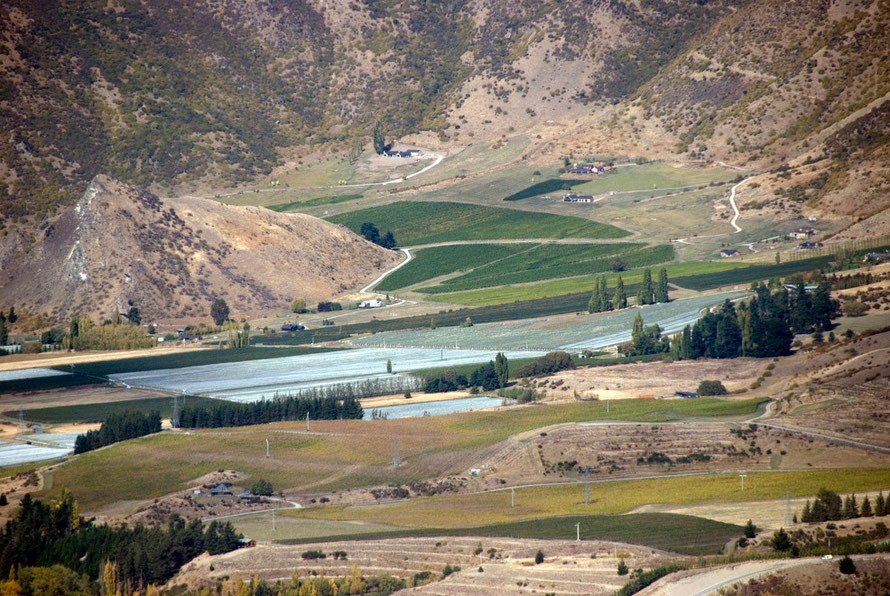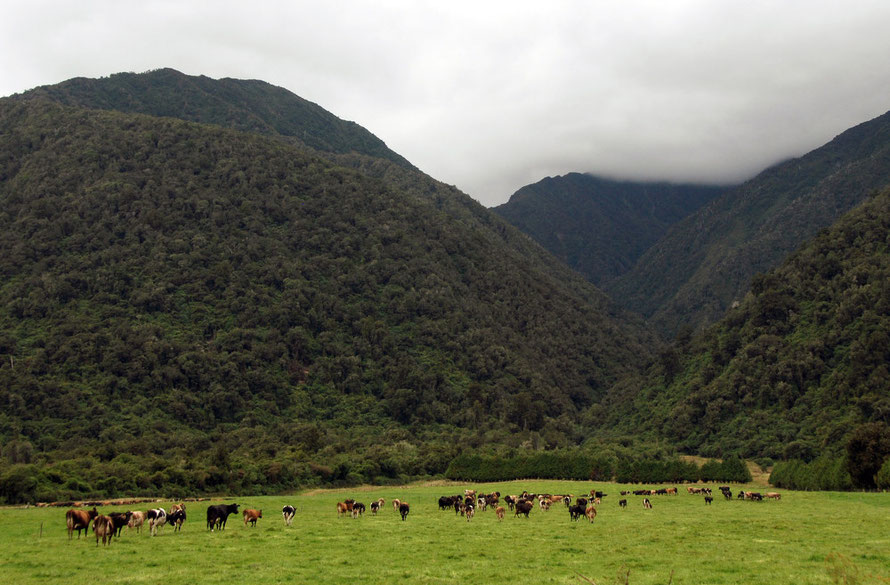VI. Environmental Impacts
There are also growing concerns about the environmental impact of the increase in dairy production in New Zealand. This seem pretty muted at the moment - at least according to the FT article
above (previous page).
Environmental concerns include
- pollution of surface and groundwater and damage to freshwater and estuarine habitats;
- soil erosion, soil contamination and damage to soil structure;
- discharge of greenhouse (methane) gases;
- destruction of wetland and native lowland forests;
- water availability for irrigation.
'New Zealand agriculture is the largest source of emissions, contributing 48 per cent of New Zealand’s total Green House Gas emissions in 2007' (NZAE p.5).
The Parliamentary Commissioner for the Environment produced a report in 2013 on 'Water quality in New Zealand: Land use and nutrient pollution'.
Changes in land use are not uniform,
Over recent years, shifting commodity prices have led to many sheep/beef farms on relatively flat and fertile land being converted to dairy farms. At the same time, large areas of hill country sheep/beef land have been planted in forest, and some have been left to revert to unproductive scrubland. The LURNZ model predicts that these trends will continue (p.65)
The increase in dairy shows annual nitrogen loads on fresh water 'continuing to risein virtually every region ... Canterbury, Southland, and to a lesser extent, Otago, stand out.' (p.66).
The models employed in the report assume that mitigation measures will match increases in nitrogen run-off - an assumption the report itself admits is 'optimistic' (p.67).
The report is pretty mealy-mouthed in its conclusions and bases them on increases in nutrification only caused by bringing new land into dairy production (due to the mitigation assumption above).

I would suggest that the penultimate paragraph is illustrative of the pressures on the Commissioner from the mighty dairy lobby.
Unfortunately, if we continue to see large-scale conversion of land to more intensive uses, it is difficult to see how water quality will not continue to decline in the next few years. This is despite the best efforts of many and some undoubted successes (Water quality in New Zealand:Land use and nutrient pollution p.67).
This rather optimistic view seems in stark contrast to some of the detailed predictive modelling - for example the Oreti catchment in Southland is predicted to experience a 90% increase in nitrogen loads by 2020 from the 1996 level (p.57).
Nitrogen load increases of 27% for the whole of Southland are predicted for the same period (p. 55). (And this assumes increases in productivity are offset by mitigation in the 2008-20 period - see note 79).

Mitigation measures
Both central and local government have committed to spending many millions of dollars seeking to protect vulnerable iconic lakes. Other important initiatives have been the Dairying and Clean Streams Accord, the Land and Water Forum, and the many catchment zone committees using a collaborative approach to managing water. On a personal level, I am regularly heartened by reading Jon Morgan’s newspaper columns about the innovation and stewardship displayed by individual farmers. p.6
These include measures such as keeping cattle out of streams and planting riparian (riverside) strips and spreading shed dung on the land (p.41). Capital intensive stand-off pads, over-wintering in barns and the creation of artificial wetlands (p.45) are unlikely to be adopted widely before 2020.
More progress is likely in the more efficient use of fertilizer, improved genetics reducing the amounts of fertilizer required, good environmental standards in new dairy conversions and 'compliance of all dairy farms with Sustainable Dairying: Water Accord nutrient goals.'
On this basis the model used assumed that farmers would be ‘holding the line’ by 2020, increasing productivity while holding nutrient losses steady' p.49. As the report says twice, 'This assumption is optimistic' (Water quality in New Zealand:Land use and nutrient pollution.p.49 and 67).
Environment regulation and sustainability management has been devolved to the regions and there is considerable uncertainty as to how this will work and the costs that will be imposed on agriculture. The same can be said for an Emission Trading Scheme that in 2011 postponed the inclusion of agriculture in the scheme (see OECD NZ Agri Risk p.15).





